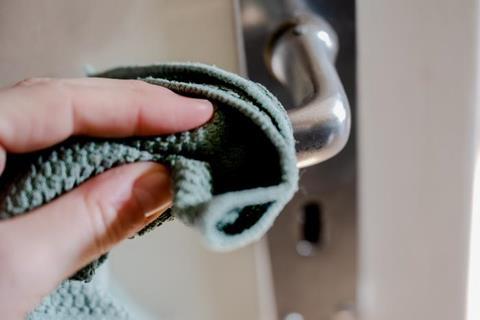The hepatitis A virus (HAV) is one of the main causes of viral hepatitis and is responsible for an estimated 159,000 infections and 39,000 deaths each year. To prevent infection, it is recommended to disinfect surfaces, especially when infection rates are high. Researchers from the Department of Molecular and Medical Virology at Ruhr University Bochum, Germany, tested nine different surface disinfectants against HAV. According to their findings, only two aldehyde-based products proved effective at inactivating HAV. The team published their results in the Journal of Hospital Infection on March 14, 2025.

The researchers applied HAV particles to steel surfaces to determine the number of infectious virus particles over 60 days. “We detected infectious particles on the surface for up to 40 days, which indicates a high stability of the virus,” says doctoral student Lilli Pottkämper. It took around 18 days for the number of infectious particles to be reduced by half.
The research team then applied various disinfectants to the samples. Among the nine products tested were alcohol-based, aldehyde-based, one peracetic acid-based, one oxygen-based and one hydrogen peroxide-based. “With the exception of the two aldehyde-based products, none of the disinfectants reduced the risk of infection to a sufficient extent,” points out Lilli Pottkämper.
The extent to which infection via contaminated surfaces contributes to hepatitis A infection rates is not known. The virus isexcreted via faeces and then ingested orally, often via contaminated food or drinking water. “As matters stand, effective surface disinfection could help to prevent infection, especially in the case of high infection rates,” concludes Lilli Pottkämper.




No comments yet